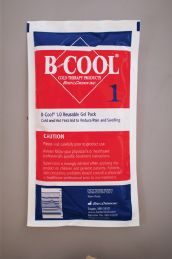
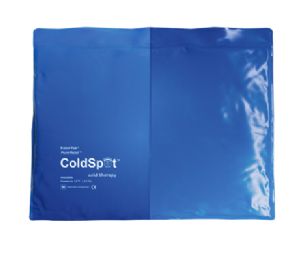
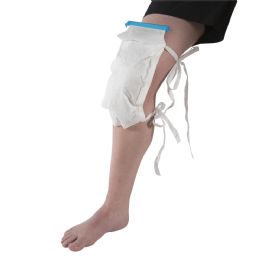
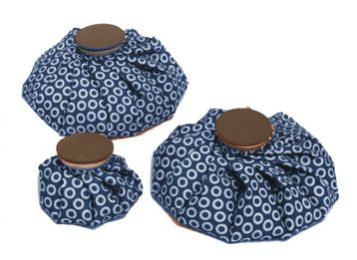
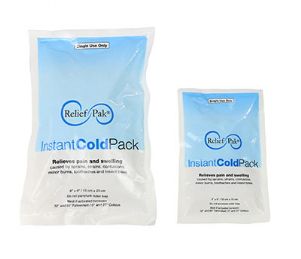



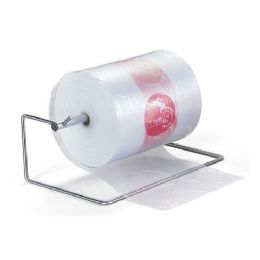




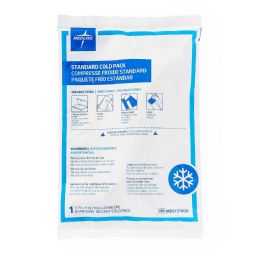
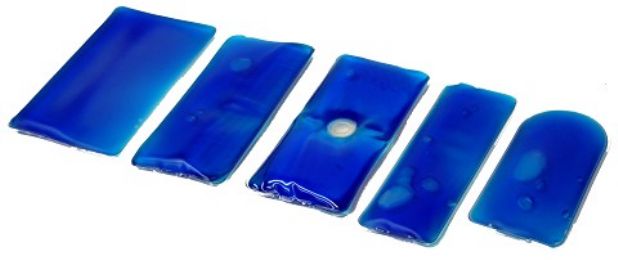
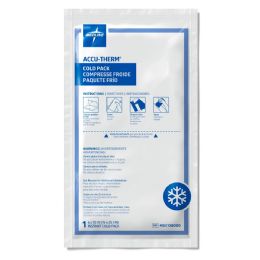
What is Cold Therapy?
Cold therapy is a type of non-addictive and non-invasive pain relief method for acute soft tissue damage injuries such as sprains, strains, pulled muscles, pulled ligaments, bumps and bruises. Cold therapy works by slowing down the blood flow, or circulation, to the affected and inflamed area thereby reducing inflammation, muscle spasms and pain. Cold therapies numb the nerve endings, decreasing the pain messages sent to the brain.
When to Use Cold Therapy?
Cold therapy is often the immediate first aid applied to injured areas within the first 24 to 48 hours after the injury has been incurred. With a new injury where soft tissue damage occurs, the injured site will begin to swell, leading to cell death by the increase of blood volume to the affected area. This is known as a secondary hypoxic injury. The quicker ice therapy is applied to the affected site, a better opportunity can be made to control the excessive bleeding, allowing a quicker healing time.
One technique to remember the standard treatment of acute soft-tissue injures is the P.R.I.C.E principle:
P – Protection
R – Rest
I –Ice
C – Compression
E – Elevation
Performing each component to treat an injury will help limit swelling and decrease pain within the injured area while effectively reducing the recovery time, as well. The PRICE technique involves Cold Compression Therapy which combines two of the principles of PRICE, cryotherapy and static compression.
Cryotherapy has become one of the most commonly used treatments in orthopedic medicine and acute injury management. Using ice or cold in a therapeutic setting, it helps to lower the temperature of the injured area, reducing the tissue’s metabolic rate and assisting the cells to survive the period following the injury.
Static compression is using compression to increase the external pressure on the injured tissue to help prevent edema formation, or swelling. Using static compression helps to hinder the fluid loss from the vessels within the injured area, making it more difficult for blood and fluids to accumulate. When used with cryotherapy for acute injuries, the enhanced skin contact will assist the tissues to reach a lower temperature faster, allowing the tissue to remain cool even after the end of the treatment.
When using cold compression wraps it is safer to use either gel packs or re-freezable ice because such products do not exceed the cooling/icing temperature recommended by the established medical community. Most ice wraps use adjustable elastic straps to aid in compression and to keep the cooling agent over the injured area. They also highlight a built-in protective layer between the freezing agent and the skin to keep the ice from ‘burning’ the skin, a condition known as a “cryoburn”.
Apply cold compression therapy no longer than 20 minutes, remove the cold compression for 10 minutes, and then reapply it again. Cold compressions can be applied several times a day, up to eight to ten times within a twenty-four hour period, as needed.
How is Cold Therapy Applied?
Cold therapy can be applied via many different methods, dependent upon the type of injury and body part that needs to be cooled.
Gel packs contain a gelatinous substance and are stored frozen in a freezer until they are needed, with the capacity to be re-used numerous times. Because they are not as messy as ice packs, gel packs are often preferred in clinics and hospitals. However, due to their quick thaw rate, gel packs are not suitable in the field or at sporting events. To prevent possible frostbite and chapped skin, gel packs must be applied to the skin through a cloth or towel.
Chemical cold packs are convenient for emergency use but do not become cold enough or stay cold long enough to greatly reduce tissue temperature. Chemical cold packs are a one-time use pack that contains two chemicals that are mixed together when compressing and rupturing an inner pouch. This causes a chemical reaction and quickly lowers the temperature of the cold pack. Caution is advised if the outer pouch is punctured, as a leak of the chemicals can cause a chemical burn to the user.
Ice is best used with an ice bag made of waterproof, rubberized fabric and a screw cap to eliminate the mess of water spillage from the melting ice. Due to the fact that frostbite or cryoburns can occur with direct contact to the skin, ice should never be placed directly on the skin for any length of time. Always use a physical medium, preferably an ice bag, between ice and the affected or injured body area.
Ice massages are using ice directly on the affected area without a barrier to quickly numb the area of the injury. This can be done without burning the skin by keeping the ice moving in a slow, circular motion, never keeping the ice in one place too long. Once the desired numbness has been achieved, minimal and gentle movements can be made with the injured body part. When the numbness wears off, the ice massage can be applied for another cycle, up to two to five times a day.
Contraindications for Cold Therapy
There are some contraindications one must be aware of for cold therapy. If any of the following conditions are present, cold therapy may likely result in a negative experience. While the following list includes more common cold therapy contraindications, there are many more. Please consult a licensed healthcare professional if you have any doubts about whether cold therapy is right for you.
Cold Hypersensitivity includes many forms, such as:
Cold Erythema – A rash caused by exposure to cold, and is characterized by redness and itching which may cause muscular spasms and severe pain.
Cold Hemoglobinuria – Caused by red blood cells breaking down so quickly that some hemoglobin cannot combine with blood proteins.
Anesthesia – If an area is numbed or has altered sensitivity, cold therapy should not be used because the degrees of both cooling and pain cannot be felt by the user.
Cold Urticaria – This is a release of histamine during the re-warming time after the period of cooling, causing red, itchy welts on the skin, also known as hives.
Raynaud’s Phenomenon – This is a condition that affects the small blood vessels in the extremities, mostly in the fingers and toes, where the fingers or toes can change color and feel cold and numb from the lack of blood flow. This condition is usually caused by cold or stress, but after the body parts warm up, blood flow returns in about 15 minutes. Exposure to cold therapy may promote a return of these symptoms.
Rehabmart is pleased to carry superior quality cold therapy products from trusted and respected vendors that include Fabrication Enterprises, North Coast, Chattanooga, Independence Medical, Mettler Electronics, Sammons Preston, ICE 20, McKesson Medical-Surgical, DeRoyal, Carex, Medline, Coolture, and others.
Hulet Smith, OT
Rehabmart Co-Founder & CEO